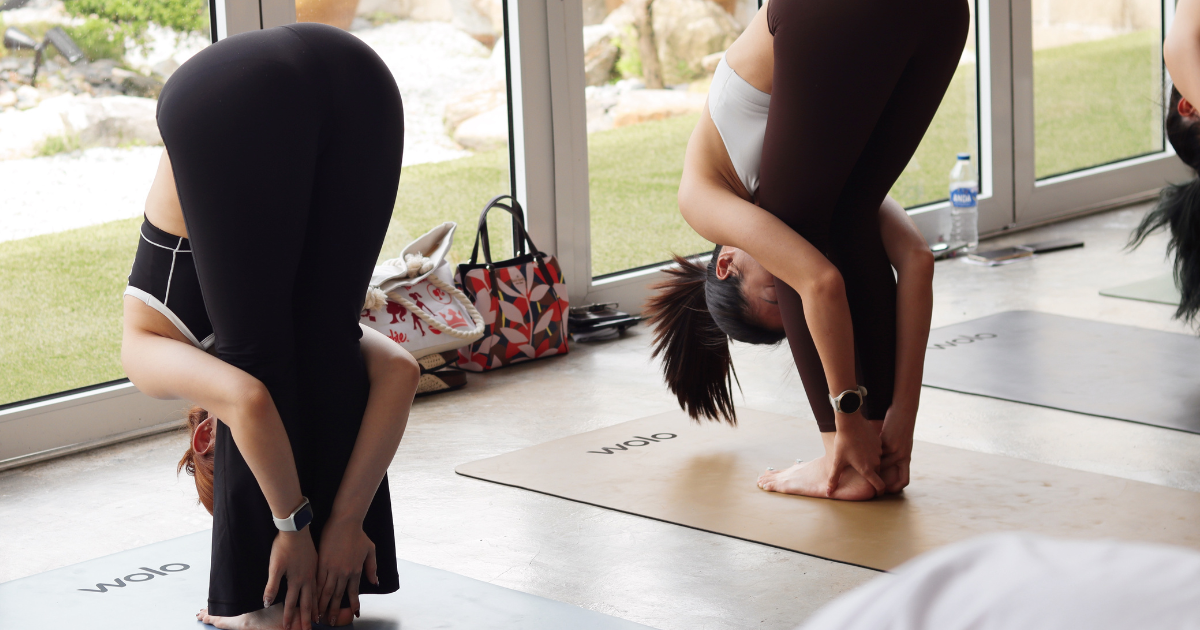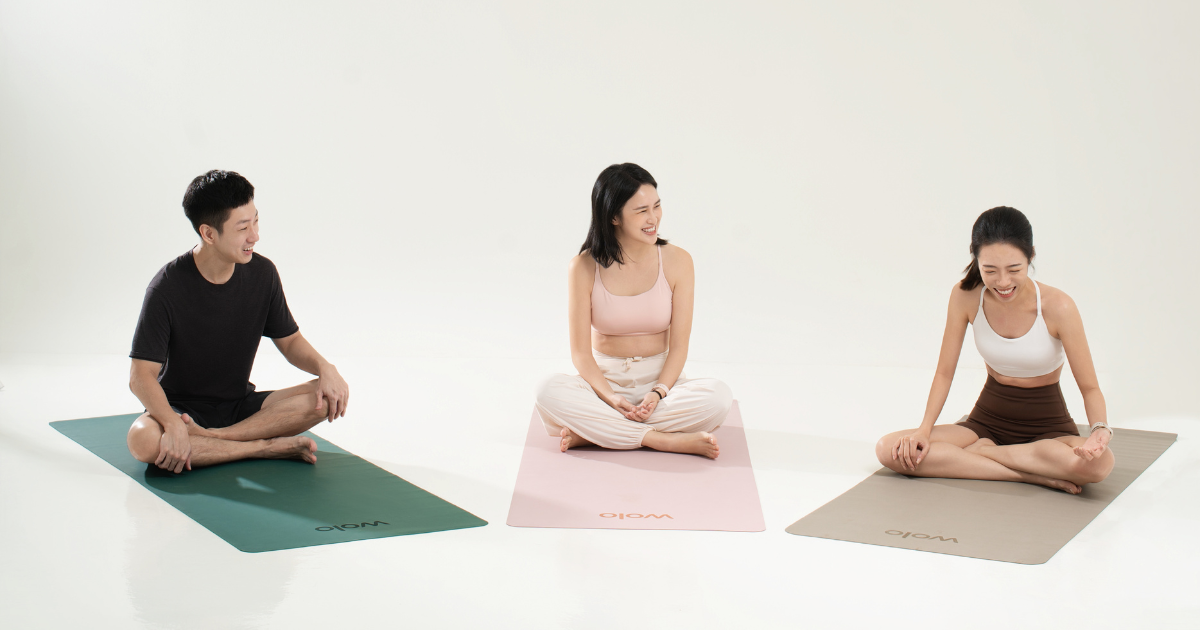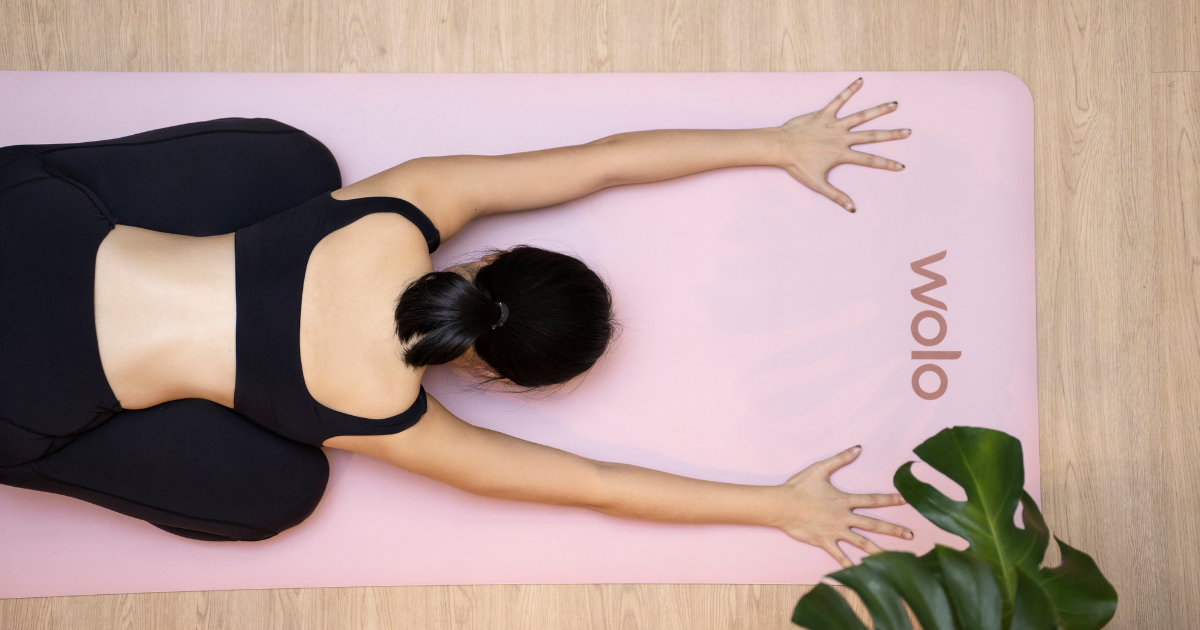If you've ever tried a Standing Forward Bend, you know it’s not as easy as it looks.
Maybe your hamstrings feel too tight, your back rounds too much, or you’re unsure if you're doing it correctly. But once you get it right, this simple yet powerful pose can transform your practice—improving flexibility, relieving stress, and promoting better posture.
In this guide, I’ll walk you through step-by-step instructions, common mistakes, and easy modifications to help you master Uttanasana.
Benefits of Standing Forward Bend

Standing Forward Bend, also known as Uttanasana, is more than just a stretch—it offers a range of benefits for both body and mind. Here’s why you should add this pose to your routine:
- Increases hamstring and calf flexibility. This pose deeply stretches your hamstrings, calves, and lower back, making it an excellent counterbalance for long periods of sitting or standing.
- Relieves stress and anxiety. Forward folds activate the parasympathetic nervous system, helping to calm the mind, ease tension, and reduce feelings of stress and anxiety.
- Improves spinal health. By elongating the spine and decompressing the vertebrae, this pose encourages better posture and reduces stiffness in the back.
- Enhances circulation. With your head positioned below your heart, this pose encourages healthy blood flow to the brain, increasing oxygen supply and improving mental clarity.
- Stimulates digestion. The gentle compression of the abdomen helps stimulate digestion, reduce bloating, and improve overall gut health.
- Builds body awareness. Practicing this pose regularly increases mindfulness of movement, improving balance, coordination, and overall connection with your body.
What to Prepare for Standing Forward Bend
Before diving into Uttanasana, it’s essential to set yourself up for success. You don’t need much—just a yoga mat and enough space to fold forward freely. If you have tight hamstrings, a yoga block can help support your hands.
Warm up with gentle stretches like Downward Dog, Seated Forward Fold, or a few rounds of Sun Salutations to prepare your hamstrings and lower back. Ensure your environment is quiet and free of distractions, allowing you to fully focus on your breath and alignment.
How to Do a Standing Forward Bend

- Start in Mountain Pose (Tadasana). Stand tall with feet hip-width apart, arms by your sides, and shoulders relaxed.
- Inhale and lengthen your spine. Engage your core, lift your chest, and slightly tilt your pelvis forward.
- Exhale and hinge from your hips. Slowly fold forward, keeping your spine long and your knees slightly bent if needed.
- Let your hands rest on the floor, your shins, or yoga blocks for support.
- Relax your neck and shoulders. Allow your head to hang naturally and keep your weight evenly distributed.
- Hold the pose for 5-10 breaths. Breathe deeply, feeling a gentle stretch in your hamstrings and lower back.
- To exit, engage your core and rise slowly. Inhale as you lift back to standing, keeping your spine neutral.
Common Mistakes (And How to Fix Them)
One common mistake in Standing Forward Bend is rounding the back. This often happens when people collapse their upper body instead of hinging from the hips. To fix this, engage your core, lengthen your spine, and lead the movement with your hips rather than your shoulders.
Another mistake is locking the knees, which can put unnecessary strain on the lower back and hamstrings. Instead, keep a slight bend in your knees to maintain better alignment and allow for a deeper stretch without discomfort.
Many people also force the fold, trying to touch the floor before their body is ready. This can lead to strain and reduced effectiveness of the pose. Instead of pushing aggressively, let gravity do the work and ease into the stretch gradually over time.
Lastly, holding your breath is a common issue that limits relaxation and mobility. Breathing deeply and evenly helps release tension and allows the muscles to stretch more naturally. Always focus on steady inhales and exhales to maximize the benefits of the pose.
5 Standing Forward Bend Modifications and Variations
Bent-Knee Forward Fold
Slightly bending the knees reduces strain on the lower back and hamstrings, making it easier to fold forward while maintaining a long spine and proper alignment.
Best for: Beginners or those with tight hamstrings.
Hands on Blocks

Placing hands on yoga blocks at different heights provides stability and helps maintain spinal length, making the pose more accessible for those with limited flexibility.
Best for: Those needing extra support.
Wide-Legged Forward Bend

Spreading your feet wider apart increases the stretch in the hamstrings and inner thighs, allowing for a more intense yet controlled forward fold experience.
Best for: Deepening the stretch.
Reverse Namaste Forward Fold
Clasping the hands behind your back in a reverse prayer position opens the shoulders and chest while folding forward, making it a great combination pose for upper-body mobility.
Best for: Enhancing shoulder flexibility.
One-Legged Standing Forward Fold
Lifting one leg off the ground while folding forward challenges balance and core engagement while deepening the hamstring stretch on the standing leg, making it a more advanced variation.
Best for: Advanced practitioners.
Risks and Precautions
Those with severe lower back pain, sciatica, or recent hamstring injuries should practice caution or avoid this pose.
Pregnant individuals should widen their stance and avoid deep compression. To practice safely, always listen to your body, use props when needed, and never force a stretch beyond your comfort level.
Standing Forward Bend FAQs
Can beginners do Uttanasana?
Yes! Beginners can start by keeping their knees slightly bent or using props like yoga blocks for support. This helps maintain spinal alignment and gradually builds flexibility over time.
How long should I hold the pose?
Hold the pose for 5-10 breaths for a gentle stretch or up to a minute if you want a deeper release. The longer you hold, the more your muscles relax and lengthen.
Why do I feel strain in my lower back?
Lower back strain usually happens when the spine rounds too much. Engage your core, hinge at your hips, and keep a slight bend in your knees to maintain proper alignment and reduce discomfort.
Can this pose help with back pain?
Yes, if practiced correctly! Keeping the spine long and avoiding excessive rounding helps decompress the lower back, relieving tension and improving posture over time.
Should I do this pose before or after workouts?
Both are beneficial! Before workouts, use it as a gentle warm-up to loosen the hamstrings and spine. After workouts, hold the pose longer to cool down and promote muscle recovery.
Key Takeaways
Standing Forward Bend is a simple yet powerful pose that enhances flexibility, reduces stress, and promotes better posture. Whether you're a beginner or an advanced yogi, adjusting the pose to fit your needs makes it accessible and beneficial.
Focus on proper alignment, breathe deeply, and allow your body to release tension naturally. Keep practicing, and over time, you’ll notice incredible improvements in your flexibility and overall well-being. Happy folding!





